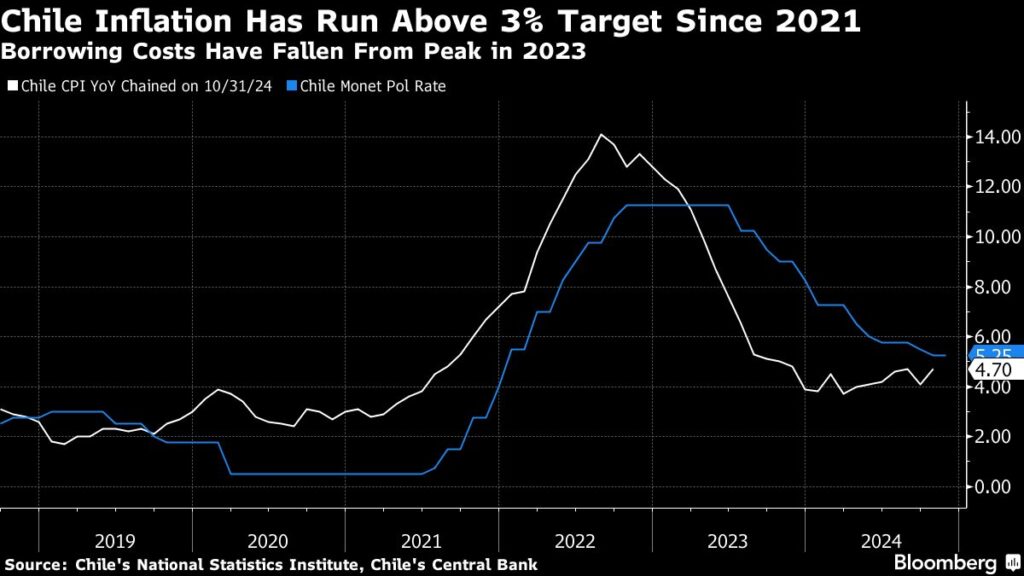In October, Chile experienced a notable rise in consumer prices, which climbed by 1%—surpassing analysts’ expectations and marking the steepest increase since March of the previous year. This rise in inflation is largely attributed to significant jumps in electricity costs, which surged by 3.7% for the month, contributing to an annual inflation rate of 4.7%, as reported by the national statistics institute. Such unexpected increases in inflation have dampened the prospects for interest rate cuts, which were previously anticipated due to signs of slowing economic growth. The latest figures indeed complicate the likelihood of further reductions in interest rates, as policymakers are now faced with the challenge of balancing inflationary pressures against the need for economic stimuli.
Analysts and economists expressed concerns regarding the implications of rising electricity tariffs, which have risen approximately 23% in October as part of a series of approved staggered increases. These hikes come in the wake of previous increases, including a notable 12% rise in July. Such substantial increases in energy costs are exacerbating the cost-of-living crisis for consumers, which is already above the central bank’s 3% target. Jorge Selaive, the chief economist at Scotiabank Chile, noted that the inflation data complicates expectations for a potential interest rate cut during the December meeting, highlighting the tension between curbing inflation and promoting growth.
The broader economic context complicates predictions for Chile’s future financial landscape. As central bank officials have noted, the uncertainty stemming from global economic conditions, particularly conflicts in the Middle East, poses significant challenges in forecasting economic performance and, consequently, crafting monetary policy. The central bank had notably reduced borrowing costs by 5.25% in the previous month, extending total rate cuts to 6 percentage points since mid-2023, reflecting a response to indications of weakened economic activity. However, the recent inflation figures could prompt a reassessment of this easing approach, as sustained high inflation can undermine consumer purchasing power and economic recovery.
Market reactions to external political events have also influenced the Chilean economy, reflecting the interconnectedness of global markets. The recent fluctuations of the Chilean peso occur within this volatile context; for instance, the market’s response to Donald Trump’s presidential election victory in the United States had immediate effects on local currency values. Such external factors further complicate Chilean policymakers’ ability to navigate domestic economic challenges while remaining responsive to international developments that impact trade, investment, and overall economic sentiment.
Compounding these challenges is the recent plunge in Chile’s economic activity, which recorded its most significant decline since July 2022 in September. This downturn led the government to revise its growth forecasts downward, intensifying expectations for additional interest rate cuts to stimulate the economy. Such measures could potentially help cushion the effects of both increased inflation and declining growth, allowing for some reprieve for consumers and businesses alike. However, the effectiveness of rate cuts in addressing these challenges hinges on the underlying factors contributing to inflation and whether they are transitory or indicative of deeper systemic issues within the economy.
Ultimately, Chile’s current economic outlook is characterized by a delicate balance between rising inflation, external economic pressures, and slowing growth. Policymakers are tasked with carefully navigating these challenges to foster a stable economic environment while addressing the immediate needs of consumers facing escalating living costs. As the situation evolves, close attention will be paid to incoming economic data and its implications for monetary policy, with the potential for further adjustments in interest rates as officials respond to the competing forces of inflation control and economic recovery.

